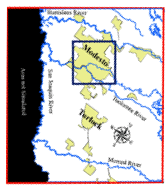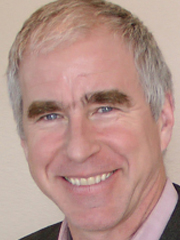Environmental Tracers for Groundwater Age & Sustainability
Current Funding: UC Seed Grant Program, Environmental tracers in the calibration of aquifer models and management of groundwater (co-PI with Jean-Raynauld de Dreuzy, Géosciences Rennes), $11,450, 2013-2014.
Students: Tristan Babey, Jean Marçais/Géosciences Rennes; Mohamed Nassar/UC Davis.
Collaborators: Jean-Raynauld de Dreuzy/Université de Rennes, France; James McCallum/CSIRO Australia; Arash Massoudieh/Catholic University of America.
Project Summary: Analyses of sustainability of groundwater resources require quantitative tools that tell how groundwater responds to forcing functions that are transient on multiple time scales. These include both engineered effects, e.g., increasing withdrawals or artificial recharge, and natural forcing’s, e.g., weather patterns on seasonal time scales, climate change on decadal or even annual time scales. The resulting residence-time distribution, or age, of groundwater sampled at a given well is a key property that reflects not only local conditions but in fact global information about the subsurface materials along the historical flow path of the water (Marçais et al., in review; McCallum et al., 2014). With the governing equation of groundwater age distributions (Ginn, 1999) we have begun using isotopic data (Massoudieh and Ginn, 2011) in combination with high-resolution three-dimensional regional groundwater modeling to assess the way that moments of age – e.g., mean and variance – varies with space, and how this reflects sustainability of water resources (Woolfenden and Ginn, 2009; Ginn et al., 2009). Importantly, we are exploring how transients due to groundwater pumping and climate change may affect ages.
San Joaquin area plan view. Mean groundwater ages at sequentially deeper layers in the SJA system.
Additionally, our inability to measure aquifer properties directly remains the dominant limitation of quantitative hydrogeology. Natural subsurface materials have properties that vary greatly across the numerical grid no matter the scale of resolution. The most promising approach to evaluation of these parameters is to integrate available independent data (groundwater hydraulic head, tracer concentrations and travel times, temperature, geophysical data, etc.) with the model outcomes in a model inversion that calibrates the distributed parameters to fit both pressure and inferred age or tracer data.
Important papers on the topic:
- Marçais, J., J.-R. de Dreuzy, T. R. Ginn, P. Rousseau-Gueutind, S. Leray, Inferring transit time distributions from atmospheric tracer data: Assessment of the predictive capacities of Lumped Parameter Models on a 3D crystalline aquifer model, J. Hydrology, in review 9/2014.
- McCallum, J., N. B. Engdahl, T. R. Ginn, P. G. Cook, Non-parametric estimation of groundwater residence time distributions: What can environmental tracer data tell us about groundwater residence time? Water Resour. Res. 50(3):2022-2038, 2014.
- Engdahl, N. E., T. R. Ginn, G. E. Fogg, Non-Fickian dispersion of groundwater age, Water Resour. Res. 48(7), Art. W07508, 2012.
- Massoudieh, A. and T. R. Ginn, The theoretical relation between unstable solutes and groundwater age, Water Resour. Res. 47, Art. 10523, 2011.
- Ginn, T. R., H. Haeri, L. Foglia, and A. Massoudieh, Notes on groundwater age in forward and inverse modeling, Transport in Porous Media,79:117-134, 2009.
- Woolfenden L. and T.R. Ginn. Modeled Groundwater Age Distributions. Ground Water, 47(4): 547-557, 2009.
- Ginn, T. R., Comment on “Groundwater age, life expectancy, and transit time distributions in advective-dispersive systems: 1. Generalized reservoir theory,” by F. Cornaton and P. Perrochet, Adv. Water Resour., 30(4): 1056-1057, 2007
- Ginn, T.R. On the distribution of generalized exposure-time in groundwater flow and reactive transport: Foundations; formulations for groundwater age, geochemical heterogeneity, and biodegradation, Water Resour. Res., 35(5):1395-1408, 1999.







